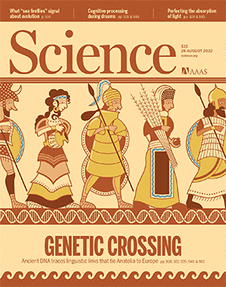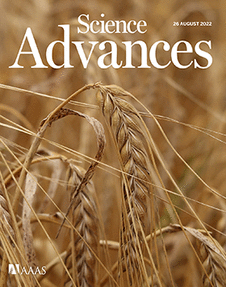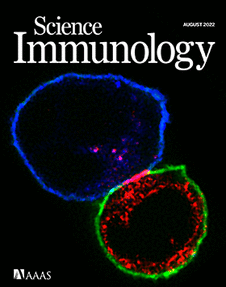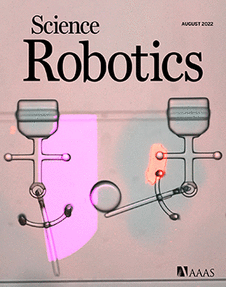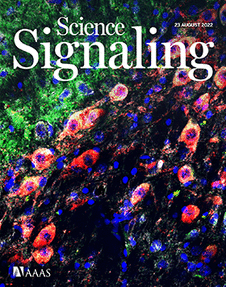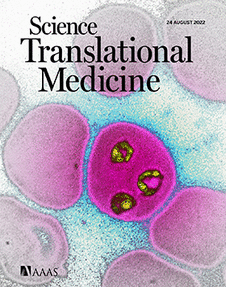- AAAS Board of Directors
- Sudip S. Parikh, Chief Executive Officer and Executive Publisher, Science Family of Journals
- Holden Thorp, Editor-in-Chief
- Bill Moran, Publisher
- Monica M. Bradford, Executive Editor
- Tim Appenzeller, News Editor
- Lisa D. Chong, Editor, Insights
- Valda Vinson, Editor, Research
- Jake S. Yeston, Editor, Research
- John Travis, News Managing Editor
- Beth Rakouskas, Creative Director
Sudip S. Parikh, Chief Executive Officer and Executive Publisher, Science Family of Journals
Sudip Parikh, Ph.D., became the 19th chief executive officer of the American Association for the Advancement of Science (AAAS) and executive publisher of the Science family of journals in January 2020. Parikh has spent two decades at the nexus of science, policy, and business.
Immediately prior to joining AAAS, Parikh was senior vice president and managing director at DIA Global, a neutral, multidisciplinary organization bringing together regulators, industry, academia, patients, and other stakeholders interested in healthcare product development. He led strategy in the Americas and oversaw DIA programs that catalyzed progress globally toward novel regulatory frameworks for advanced therapies not amenable to existing regulations.
Prior to DIA, Sudip was general manager of the Health and Consumer Solutions business unit and vice president at Battelle, a multibillion-dollar research and development organization. He led a $150 million business unit with over 500 scientific, technical, and computing experts performing basic and applied research, developing medicines and healthcare devices, and creating advanced analytics and artificial intelligence applications to improve human health. Previously, Parikh led Battelle’s global AgriFood business unit. Headquartered in London and Geneva, this unit provided environmental fate research and agriculture product development services from laboratories throughout Europe and the United States.
From 2001 to 2009, Parikh served as science advisor and professional staff to the United States Senate Appropriations Committee, where he was responsible for negotiating budgets for the National Institutes of Health (NIH), Centers for Disease Control and Prevention, Agency for Healthcare Research and Quality, Biomedical Advanced Research and Development Authority, and other scientific and health agencies. A key legislative liaison to the research and development ecosystem, Parikh was on the frontlines of many science policy issues debated during that time, including embryonic stem cell research, cloning, disease surveillance, bioterrorism, cyber security, and doubling the NIH budget.
An active member of the scientific advocacy community, Parikh serves as a board member and officer for several impactful organizations, including Research!America, Friends of Cancer Research, and ACT for NIH. He has received multiple public service awards, including recognition from the American Association of Immunologists, the National AIDS Alliance, the Coalition for Health Services Research, and the Juvenile Diabetes Research Foundation.
Sudip is committed to early STEM education and, as a parent of three energetic young children, he prioritizes volunteering as a mentor for Science Olympiad teams at two elementary schools.
Early in his career, Parikh was a Presidential Management Intern at the NIH. He was awarded a National Science Foundation Graduate Research Fellowship while earning his Ph.D. in macromolecular structure and chemistry from the Scripps Research Institute in La Jolla, Calif. There, he used structural biology and biochemistry techniques to probe the mechanisms of DNA repair enzymes bound to DNA. The son of Indian immigrants who worked in the textile and furniture manufacturing plants of North Carolina, Parikh completed undergraduate studies at the University of North Carolina at Chapel Hill, first as a journalism major before switching into materials science.
Holden Thorp, Editor-in-Chief
Holden Thorp became Editor-in-Chief of the Science family of journals on 28 October 2019. He came to Science from Washington University, where he was provost from 2013 to 2019 and where he is Rita Levi-Montalcini Distinguished University Professor and holds appointments in both chemistry and medicine.
Thorp joined Washington University after spending three decades at the University of North Carolina at Chapel Hill (UNC), where he served as the 10th chancellor from 2008 through 2013.
A North Carolina native, Thorp started at UNC as an undergraduate student and earned a bachelor of science degree in chemistry in 1986. He earned a doctorate in chemistry in 1989 at the California Institute of Technology, working with Harry B. Gray on inorganic photochemistry. He completed postdoctoral work at Yale University with Gary W. Brudvig, working on model compounds and reactions for the manganese cluster in the photosynthetic reaction center. He holds an honorary doctor of laws degree from North Carolina Wesleyan College and is a fellow of the American Academy of Arts and Sciences, the National Academy of Inventors, and the American Association for the Advancement of Science.
In his research career, Thorp studied electron-transfer reactions of nucleic acids, developed technology for electronic DNA chips, and cofounded Viamet Pharmaceuticals, which developed VIVJOA (oteseconazole), now approved by the FDA and marketed by Mycovia Pharmaceuticals. Thorp is a venture partner at Hatteras Venture Partners, a consultant to Ancora, and is on the board of directors of PBS, the College Advising Corps, and Artizan Biosciences.
Thorp is the coauthor, with Buck Goldstein, of two books on higher education: Engines of Innovation: The Entrepreneurial University in the Twenty-First Century and Our Higher Calling: Rebuilding the Partnership Between America and its Colleges and Universities, both from UNC Press.
Bill Moran, Publisher
Bill Moran is currently the Publisher of the Science Family of Journals. In his role, Bill and the publishing team are responsible for content, rights and permissions, licensing, scientific meetings, publishing collaborations, advertising, outreach, Science Careers and all publishing operations.
During his 11 years with AAAS, Bill has been instrumental in broadening the association’s international publishing activities and collaborations. He spearheaded the launch of the Beijing office; in addition, he developed an international collaboration program for Science Publishing that encompasses Science Careers outreach. Bill has also worked with the Science editorial team to raise awareness of Science/AAAS within academic institutions in developed and developing countries. Notably, in 2014, Bill collaborated with the Chinese Academy of Sciences to arrange a meeting between former Editor-in-Chief of Science Dr. Marcia McNutt and the Premier of China Li Keqiang. He further established Science Custom Publishing activity a decade ago.
Before taking on the role of Publisher Bill's previous role was Director of Global Collaboration and Custom Publishing. These responsibilities include operations related to the following products: Science, Science Signaling, Science Translational Medicine, Science Immunology and Science Robotics, and outreach. Science Careers was a large part of Bill's responsibility and the task of building awareness for Science Careers as a valuable tool for all researchers regarding career development.
The first ten years of Bill's career were with the Nature Publishing Group. Bill was a senior VP of Nature America based in New York City. While at NPG, Bill developed the strategy and launched the first online job board for NPG, including a founding member of Nature online. Additionally, his responsibilities included working on several new journal launches, Nature jobs, and developing supplements and conferences for NPG.
Before moving to Science/AAAS, Bill was recruited by Informa based in the Boston area to help with their launch into the STM market. While at Informa, Bill was responsible for several new product launches and the acquisition of new journals, including the redesign of online products. He received his bachelor's degree from Baruch College.
Monica M. Bradford, Executive Editor
Monica Bradford is the Executive Editor of the international journal Science, published by the American Association for the Advancement of Science. In this position she oversees the peer-review and selection of manuscripts and the copyediting and proofreading process for three journals: Science, Science Signaling, and Science Translational Medicine. Monica has been heavily involved in the development of Science's web and new media offerings.
Prior to joining the staff of Science in 1989, Monica worked for the Publications Division of the American Chemical Society for nine years. She holds a bachelor's degree in chemistry from St. Mary's College, Notre Dame, Indiana, and has done graduate work in management at the University of Maryland. Monica was a Director and President of the Council of Science Editors, served as Vice-Chair of the Scientific Publishing Board of the American Heart Association, and is a member of the Society for Scholarly Publishing. She resides in Silver Spring, Maryland, with her husband.
Tim Appenzeller, News Editor
Tim Appenzeller leads Science's award-winning news section and supervises its global team of staff and freelance writers and editors. He has spent 30 years as an editor and writer specializing in science and the environment for magazines including Scientific American, U.S. News & World Report, and National Geographic. His National Geographic article "The Case of the Missing Carbon" won the Walter Sullivan award for excellence in science journalism in 2005, and his June 2007 National Geographic cover story on global warming, "The Big Thaw," shared an award for best explanatory reporting from the Society of Environmental Journalists. Appenzeller was Science's Features Editor during the 1990s, and most recently was Chief Magazine Editor at Nature, responsible for its journalism and opinion.
Lisa D. Chong, Editor, Insights
As the Editor of Science's Insights, Lisa Chong oversees Editorials, Perspectives, Policy Forums, Letters, and Books sections. She joined Science in 1998 and handled research in the biological sciences as an Associate and Senior Editor. Lisa received a bachelor's degree from Cornell University and doctoral degree from Yale University in cell biology in 1993. She did postdoctoral work in La Jolla, CA at The Scripps Research Institute and the Burnham Institute, and also at the National Institutes of Health, where her studies spanned signal transduction, cell migration, and neuronal development. In addition to research discoveries, Lisa is also interested in science communication and the interface between science and culture.
Valda Vinson, Editor, Research
Valda Vinson started her career in publishing when she joined the Science staff in 1999. Since then, she has handled research papers in the areas of structural biology, biochemistry, and biophysics as an Associate, Senior Editor, and Deputy Editor. She has also edited Perspectives and served as a team leader. As Editor, Valda oversees research content in the areas of biological, life, and social sciences, working with these editors to attract and select exciting research papers and reviews, while maintaining high editorial standards. She earned an M.Sc. in Chemistry from Durban University in 1987 and a Ph.D. from Johns Hopkins University in 1992. Her postdoctoral studies were also undertaken at Johns Hopkins University, where she focused on structural and biochemical studies of cytoskeletal proteins. Before joining Science, she spent two years as a Senior Lecturer at the University of the Western Cape, South Africa.
Jake S. Yeston, Editor, Research
Jake Yeston joined the staff at Science in 2004, with responsibilities to edit and coordinate review for original research submissions in chemistry and overlapping segments of biochemistry and applied physics. He has been Associate Editor, Senior Editor, Team Leader, and Deputy Editor, and also edited the physical sciences portion of Science's Editors' Choice section. In his current role as Editor, he oversees research content in the physical sciences. Prior to arriving at Science, Jake earned an AB in chemistry from Harvard University in 1996 and a PhD in chemistry from the University of California-Berkeley in 2001, with a focus at the interface of synthetic organometallic chemistry and spectroscopy. He conducted postdoctoral research in ultrafast spectroscopy at the Max Planck Institute for Quantum Optics in Garching, Germany on the Humboldt fellowship, and then worked as a National Research Council fellow at the National Institute of Standards and Technology in Gaithersburg, Maryland.
John Travis, News Managing Editor
John Travis is the Managing Editor of the News section and coordinates much of the section’s biology coverage. He began his career with Science as an intern and then became its New England correspondent based in Boston, covering beats such as molecular biology and astronomy. He next spent nearly a decade covering biology for the magazine Science News before returning to Science in 2005 as a Deputy News Editor. More recently, he spent 4 years in Science's Cambridge office as European News Editor; his story "Scientists Decry "Flawed" and "Horrifying" Nationality Tests" won the 2010 Association of British Science Writers award for best news story.
Beth Rakouskas, Creative Director
Beth Rakouskas became the Creative Director for the Science family of journals in 2014. Leading the award-winning Science Visuals team, she develops the visual strategy for the Science family of journals and partners with the Research, Insights, and News teams to create visuals that both captivate readers and help explain the science. Beth champions her team’s efforts to give visuals a voice outside the pages of the journal—on Instagram, Twitter, a blog, and a visual storytelling site. From 2009 to 2014, Beth was Design Director at Science News, where she redesigned the website and magazine and launched Kindle and iPad apps. Prior to Science News, Beth managed the startup of the Graphic & Web Design Program for Boston University’s Center for Digital Imaging Arts. From 2000 to 2007, Beth was a Design Editor at National Geographic, where she played a key role in the magazine redesign and directed the design of all department pages and occasional short features. Beth won Folio’s 2018 Art Director of the Year Award and in 2019 was honored as a changemaker in Folio’s class of Top Women in Media.
